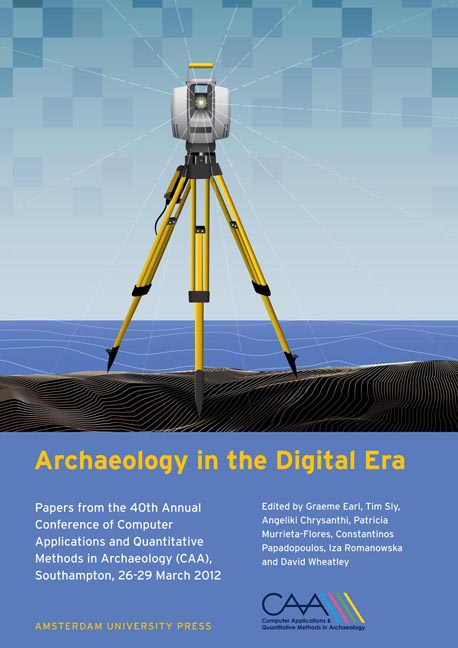 Archaeology in the Digital Era
Archaeology in the Digital Era Published online by Cambridge University Press: 16 February 2021
Abstract:
In the last few years 3D laser scanning techniques have been used more frequently as a means for recording archaeological evidence. By contrast, 3D reconstructions, more often than not, serve purely educational purposes, and their efficiency for scientific analysis is disregarded. A combination of the two approaches supports the likely transition of the virtual reproductions; extending them to the interest of varied categories of users. This paper puts an emphasis on the process of reconstructing the Roman Baths of Edeta, Lliria. It shows the capabilities of the 3D Laser scanning approach of using accurate digital data derived from the real evidence and the restoration of the different locations and shapes of the feature during the past. Additionally, 3D virtual reconstruction is used to further analyse the site and, eventually, be used to extend the general public's knowledge of its cultural heritage through highly realistic images.
Keywords:
3D Laser Scanning, 3D Modelling, Edeta, Point Cloud, Roman Baths, Lliria
Introduction
Computer Graphics has completely converted the traditional archaeological recording system. Currently, “Digital Archaeology” would be the best term to refer to it (Earl et al. 2012). Whether the information concerns spatial data or physical remains, drawings or pictures of the sites, they are archived and processed as digital information.
Thanks to the scholars involved in the process of preservation and conservation of the site, the archaeological data derived from the Roman Baths of Edeta have been recorded following this digital methodology. The work has culminated with the introduction of realistic virtual restoration of the edifices, principally focusing on educational purposes.
The hypothetical restoration has been generated taking advantage of accurate spatial data captured through 3D Laser Scanning. The use of this technology as well as other significant digital information of the site, has likely turned realistic 3D virtual models of Roman buildings into useful data. In fact, the visualisations might be appreciated not just by amateurs of history or inexpert users, but also by scientists involved in the analysis of the archaeological evidence.
Virtual development of raw geometry, traditionally recorded using photogrammetry, CAD drawings or even 3D Laser Scanning, has never been performed without criticism by experts (Lock 2003).
To save this book to your Kindle, first ensure [email protected] is added to your Approved Personal Document E-mail List under your Personal Document Settings on the Manage Your Content and Devices page of your Amazon account. Then enter the ‘name’ part of your Kindle email address below. Find out more about saving to your Kindle.
Note you can select to save to either the @free.kindle.com or @kindle.com variations. ‘@free.kindle.com’ emails are free but can only be saved to your device when it is connected to wi-fi. ‘@kindle.com’ emails can be delivered even when you are not connected to wi-fi, but note that service fees apply.
Find out more about the Kindle Personal Document Service.
To save content items to your account, please confirm that you agree to abide by our usage policies. If this is the first time you use this feature, you will be asked to authorise Cambridge Core to connect with your account. Find out more about saving content to Dropbox.
To save content items to your account, please confirm that you agree to abide by our usage policies. If this is the first time you use this feature, you will be asked to authorise Cambridge Core to connect with your account. Find out more about saving content to Google Drive.